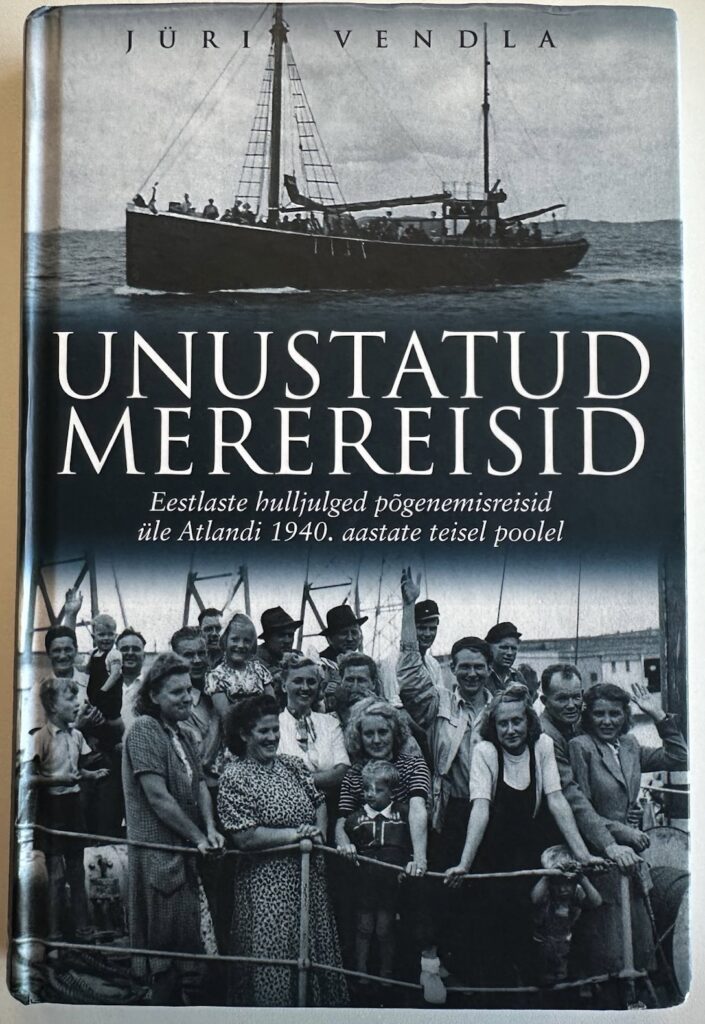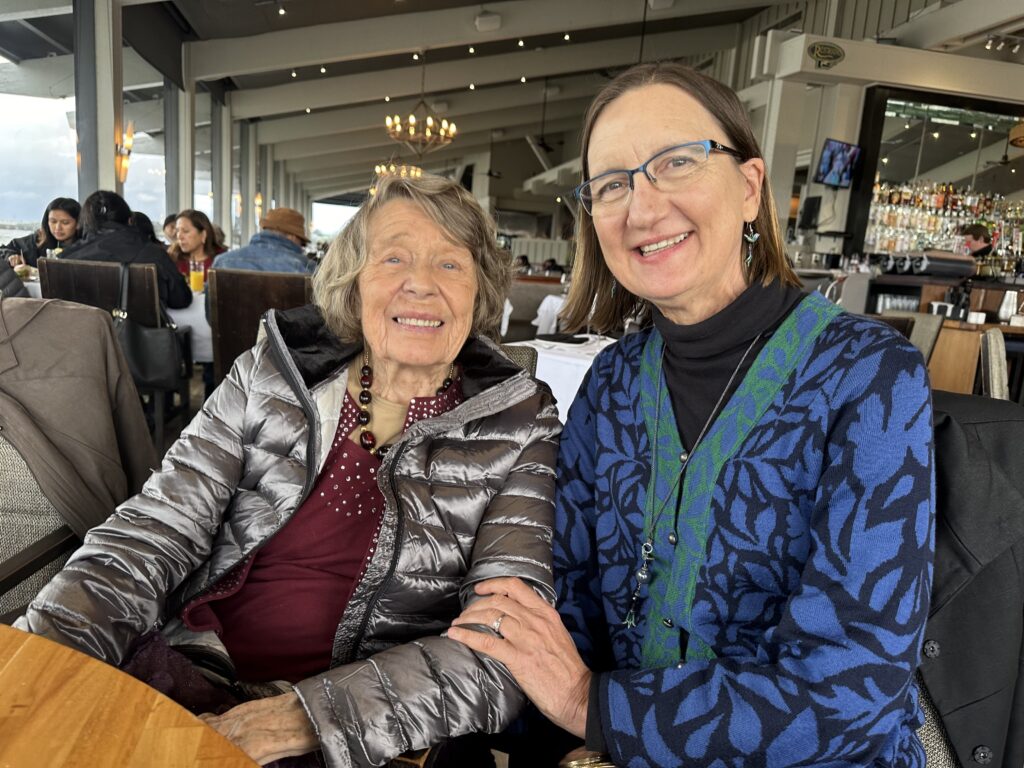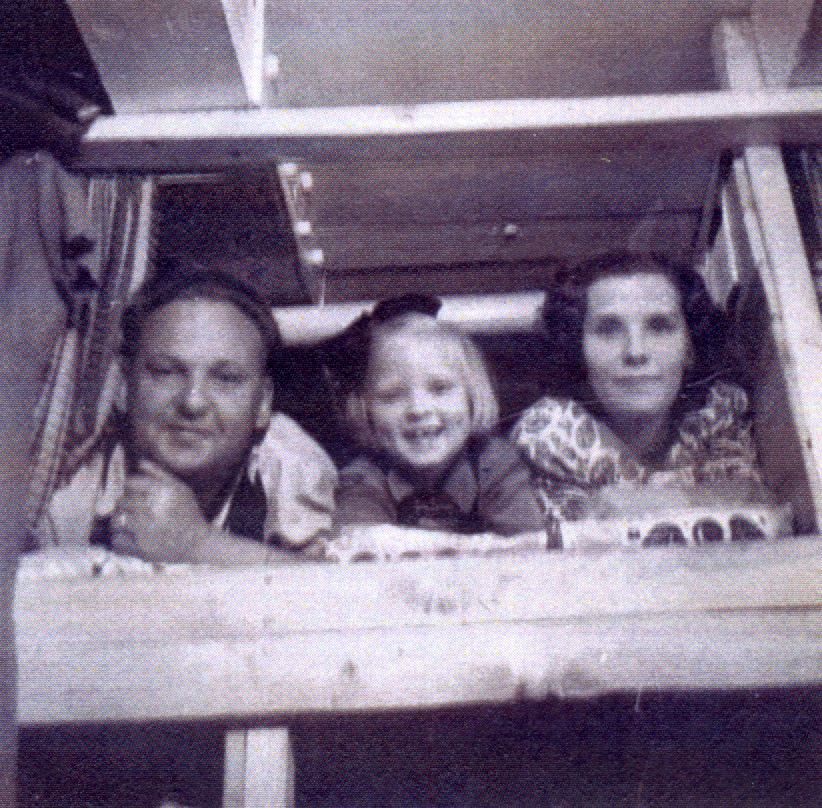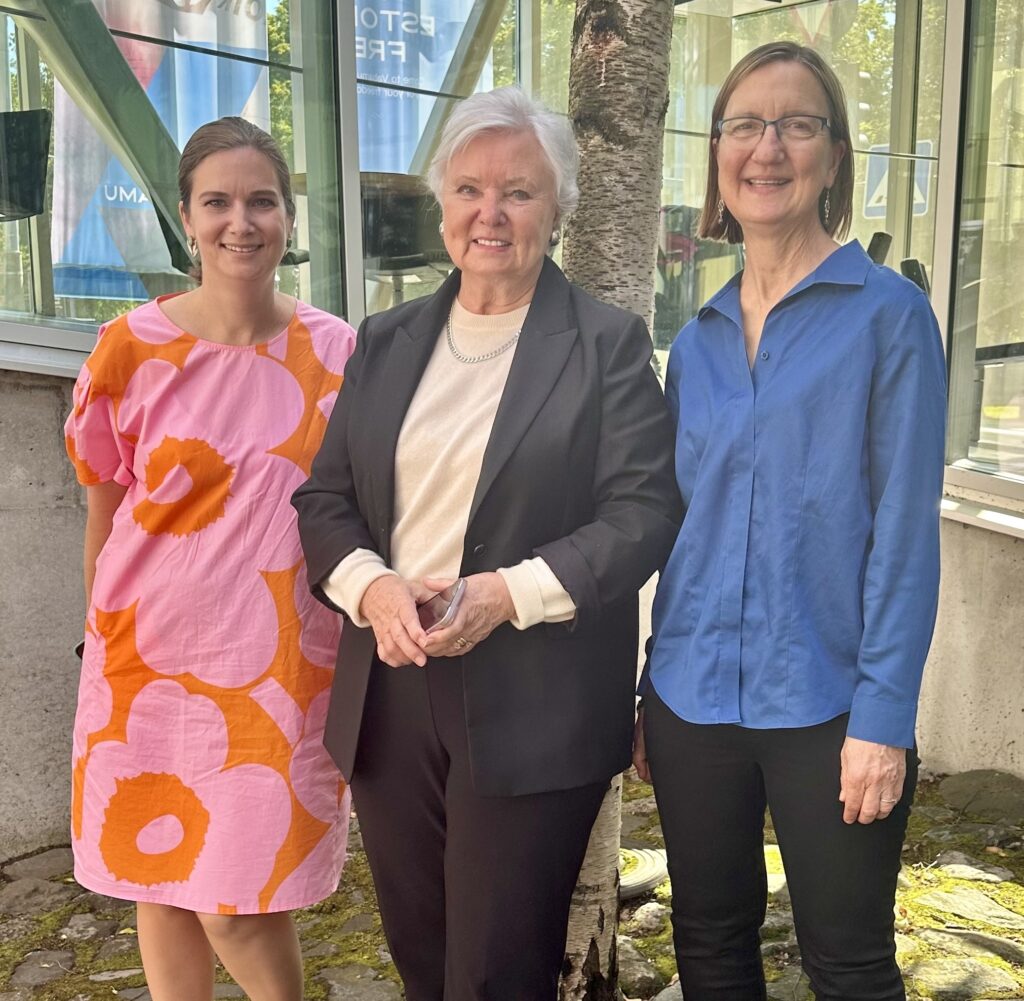Boats

Jüri Vendla var under sitt liv en estnisk sjöman, men fick först lära sig om de baltiska flyktingbåtarna efter självständigheten 1991. Han skrev sin bok för att belysa en historia som under en lång tid förtryckts av sovjetisk censur.
Tack till samt medverkande
“Fria vindar” är baserad på Jüri Vendlas bok Unustatud merereisid: Eestlaste hulljulged põgenemisreisid üle Atlandi 1940.aastate teisel poolel (Glömda sjöresor: Den vågade flykten av estländare över Atlanten under andra hälften av 1940-talet). Vendla blev inspirerad att skriva boken till viss del på grund av opublicerad forskning av Alan Trei, min bortgångne far.
Tillåtelse att omarbeta Unustatud merereisid för denna digitala utställning gavs av Toomas Vendla, SE&JS Publishing, Estlands sjöfartsmuseum samt Käsmu sjöfartsmuseum.
Ede Schank Tamkivi, chef för Noorte Vabamu (NoVa), en del av Vabamu Museum of Occupations and Freedom, gick generöst med på att ge utställningen ett hem och stöttade “Frida vindar,” vilket har gjort det möjligt att för första gången dela dessa otroligt modiga berättelser med en global publik. Utan Edes partnerskap hade detta projekt inte varit möjligt.
Mitt djupaste tack riktas även till den hjälpsamma och engagerade personalen på Vabamu som har bidragit till detta projekt, däribland Agnes Kaasik, Aive Peil, Ivo Lille, Kadri Paju, Liisi Rannast-Kask, Martin Vaino , Raimo Tõnisoo och Sander Altrov. Jag är tacksam till Franka och Anni Vakkum, samt Inga Sokman, vars vision, konstnärskap och tålamod gav liv till detta projekt. Tack även till estniska utrikesdepartementet, den amerikanska ambassaden i Estland, programmet för Estlands- och Baltikumstudier vid Stanford universitet, samt programmet för Estlandsstudier vid Tallinns universitet.
Jag är tacksam till Ruth Oja Sootaru och Kristi Vuht Allpere, passagerare ombord Prolific och Pärnu, vars mod och anda inspirerade mig att berätta deras historier.
Tack.
Lisa Trei, kurator

Ruth Oja Sootaru, som seglade över Atlanten ombord Prolific, var en viktig stöttepelare inom den Estniska föreningen i San Francisco i över 70 år.
Utställningspartners:
Design: Franka och Anni Vakkum
Hemsida: Inga Sokman, software developer på Civitta
Översättning: Ede Schank Tamkivi, Maja Soomägi, Marje Einre, Juta Ristsoo
Korrekturläsning: Ede Schank Tamkivi, Barbara Egbert, Christa Peck, Cece Grace La Puma
Finansiering: Fulbright Specialist Program, US Department of State; Eesti Kultuurkapital



Kristi Vuht Allpere var sex år gammal när hon lämnade Sverige med sina föräldrar Eduard och Elsa Vuht, ombord Pärnu 1949.

Idag är Kristi (i mitten) en ledare inom den estniska föreningen USA. På bilden tillsammans med Ede Schank Tamkivi (t.v.) och Lisa Trei (t.h.) på Vabamu.
Hjälp med innehåll:
Estland: Ede Schank Tamkivi, Maja Soomägi, och all personal på Vabamu; George Kent, amerikanska ambassaden, Tallinn; Lauri Einre; Marje Einre; Hiljar Tammela, Marko Poolamägi, och Ülle Kraft, Eesti Mälu Instituut; Aivar Jürgenson, Estlands nationalmuseum; Aigi Rahi-Tamm, Tartu universitet; Aarne Valk and Triin Saks, Käsmu sjöfartsmuseum; Ruth Ristmägi, Andres Eero, Eva Rebane, Teele Saar, och Evelin Silmet, Estlands sjöfartsmuseum; Sirje Endre, Tarmo Tilsen, och Elle Veermäe, SE&JS Publishing; Asta Trummel, Estlands kulturdepartement;
USA: Mai-Liis Bartling, Marju Rink-Abel, och Leelo Linask, Estonian American National Council; Liisi Esse och Heidi Heilemann, Stanford universitet; Jon Mihkels, Seattle Estonian Society; Southport Historical Society, North Carolina; Kärt Ulman, Vaba Eesti Sõna;
Kanada: Sarah Little, Canadian Museum of Immigration at Pier 21, Halifax; Piret Noorhani, VEMU Estonian Museum of Canada och Baltic Heritage Network; Juta Kõvamees Kitching, Finno-Ugric Studies Association of Canada; Lynda Männik, York University; Tiiu Roiser, S.S. Walnut 1948 website; Tõnu Tõsine; Valdemars Zvanitajs; Kai Kiilaspea, Eesti Elu;
Irland: Gabriel Doherty, University College Cork;
Sverige: Peter Nylander; Urmas Karheiding, Martin Jungerman, Bert Ola-Söderlund, and members of Baltiska flyktingbåtar | Baltic refugee boats 1943-45 Facebook research group.
Kort om nyhetskällor: Estniska émigrépublikationer var väldigt aktiva efter andra världskriget. Artiklar om de baltiska flyktingbåtarna i denna utställning togs från:
Sverige: Stockholms-Tidningen Eestlastele, Välis-Eesti, Eesti Teataja;
Tyskland: Eesti Post
USA: Vaba Eesti Sõna;
Kanada: Vaba Eestlane.
Fotografier används med tillåtelse från: familjen Vuht ombord MV Pärnu, juli-augusti 1949 Canadian Museum of Immigration at Pier 21 (DI2014.666.9).
